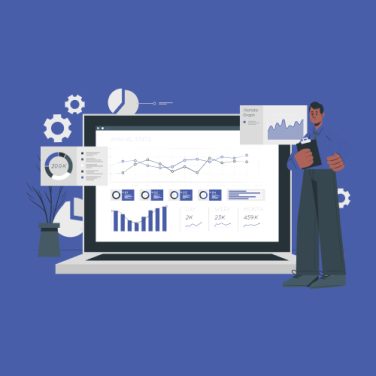Organisations moving from traditional to cloud HRIS gain scalability, flexibility, and cost savings. Yet a misstep can lead to hidden costs, user resistance, and compliance gaps.
An end-to-end buying framework—from requirements gathering through contract negotiation—ensures decision makers select the best cloud-based HRIS software and avoid pitfalls.
What Is cloud-based HRIS software?
Cloud based HRIS software delivers HR functions via a web-hosted environment rather than on-premise servers. SaaS HRIS platforms simplify access, maintenance, and updates, offering mobile apps and automatic feature releases without IT overhead.
- Definition: SaaS HRIS vs on-premise HRIS—access model and updates.
- Core functions: employee records, time and attendance, payroll, benefits administration.
- Deployment advantages: rapid rollout, automatic updates, mobile accessibility.
- Security and compliance: data encryption, ISO 27001 and SOC 2 certifications.
Key benefits of cloud-based HRIS software
Cloud HRIS platforms streamline HR processes, enable data-driven decisions, enhance employee experiences, support global payroll, and automate compliance. MiHCM products illustrate these capabilities:
- Streamlined HR operations: MiHCM Lite automates workflows, reducing manual tasks for small and large teams.
- Data-driven decisions: MiHCM Data & AI delivers real-time analytics and predictive insights for workforce planning.
- Global payroll management: MiHCM Enterprise handles multi-currency payroll accurately and rapidly.
- Employee self-service: MiA mobile app empowers staff to update records and submit requests, cutting HR queries.
Types of cloud-based HRIS software
Modular cloud HRIS platforms let organisations tailor their system footprint by selecting core and add-on modules. Core modules typically cover the essentials, while advanced modules support growth and specialised needs.
- Core modules: employee database, payroll engine, time and attendance, benefits administration.
- Add-on modules: performance management, recruitment, learning management, advanced analytics.
- Role-based licensing: choose modules by role to optimise costs.
- Scalability: modular architecture adapts as business requirements evolve.
Feature checklist: Core vs. add-on modules
Core modules to prioritise:
- Secure employee records with audit logs.
- Payroll accuracy and tax compliance.
- Time & attendance with mobile clock-in.
- Benefits administration workflows.
High-value add-on modules:
- Performance management with goal tracking.
- Recruitment ATS and candidate portals.
- Learning management system (LMS) with compliance training.
- Advanced analytics dashboards and reporting.
Integration and UX must-haves:
- API and SSO connectivity.
- Mobile self-service and intuitive UI.
- AI-powered recommendations.
- E-learning and talent management as optional features.
Criteria for evaluating cloud HRIS vendors
Selecting the best cloud-based HRIS software requires rigorous vendor evaluation. Key criteria include:
- Security and data privacy: ISO 27001, SOC 2, GDPR compliance.
- Scalability and SLAs: uptime guarantees, load handling commitments.
- Integration and open APIs: seamless data exchange with ERP, ATS, finance systems.
- Product innovation: update frequency, AI roadmap, release cadence.
- Customer success: case studies, reference calls, and community forums.
How to write an RFP for cloud HRIS software
An effective RFP accelerates vendor responses and ensures comparability. Structure it to cover:
- Company background: mission, workforce size, IT landscape.
- Project goals: desired outcomes, timeline, budget.
- Functional requirements: modules, user roles, reporting capabilities.
- Non-functional requirements: security, compliance, uptime.
- Evaluation criteria: weighted scoring for features, cost, support.
- Submission guidelines: deadlines, contact points, demo requests.
Questions to ask during vendor demos
- Can you show a live walkthrough of payroll and compliance reporting?
- How does your system handle integrations and data migrations?
- What is your support model (24/7 support, dedicated CSM)?
- How configurable are workflows, approvals, and user roles?
- Can you demonstrate mobile self-service and analytics dashboards?
Vendor reliability and support SLAs
Reliable support and clear SLAs reduce risk and ensure consistent performance. Key SLA components include:
- Uptime guarantees: target uptime of 99.9% or higher.
- Response and resolution times: defined targets for each severity level.
- Escalation procedures: multi-tier support and root cause analysis commitments.
- Review cadence: regular business reviews and performance reports.
- Support channels: phone, email, chat, dedicated customer success manager.
- Vendor health metrics: NPS, churn rates, reference feedback.
Comparing pricing and contract terms
| Model | Pros | Cons |
|---|---|---|
| Per user/month | Predictable, scales with headcount | Costs rise rapidly with hiring |
| Flat fee | Fixed cost, easy budgeting | May underutilise seats |
| Usage-based | Pay only for usage peaks | Variable billing, hard to forecast |
- Module-based pricing: bundling vs à la carte costs.
- Contract length, auto-renewal clauses, termination penalties.
- Hidden fees: onboarding, training, integrations, support tiers.
- Service credits for SLA breaches and flexible scaling.
Implementation timeline and change management
- Phase 1: Discovery, requirements gathering, kick-off workshop (2–4 weeks).
- Phase 2: Configuration, integrations, data migration, UAT (6–8 weeks).
- Phase 3: Training, pilot rollout, adoption campaigns (4–6 weeks).
Effective change management includes stakeholder engagement, a clear communication plan, and post-go-live hyper-care support. Continuous feedback loops ensure improvements after launch.
Total cost of ownership analysis
Calculating TCO for cloud-based HRIS software involves:
- Upfront costs: subscription fees, implementation, training.
- Recurring costs: support tiers, integrations, upgrades.
- Indirect costs: internal project management, data cleansing, downtime.
- Opportunity costs: productivity gains vs transition disruptions.
- ROI: payback period, error reduction, efficiency improvements.
Negotiation tips and contract pitfalls
- Bundle modules to secure volume discounts and pilot pricing.
- Cap recurring fee increases and demand transparent schedules.
- Negotiate SLAs with penalties for downtime and slow response.
- Include exit clauses: data export formats, transitional support, IP rights.
- Obtain legal review for indemnification, liability caps, and confidentiality.
Next steps: Selecting your ideal cloud HRIS
- Use this guide’s checklist to shortlist vendors.
- Run a two-week pilot with the top 2–3 solutions.
- Engage stakeholders with demo feedback and cost/benefit analysis.
- Finalise contracts with clear SLAs and exit options.
- Leverage MiHCM’s trial to experience core features and support firsthand.



